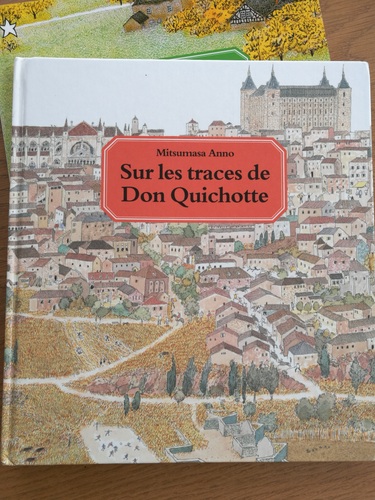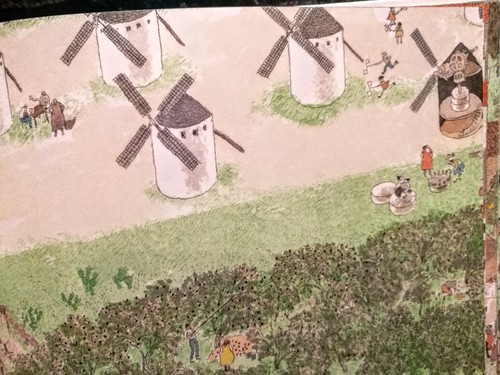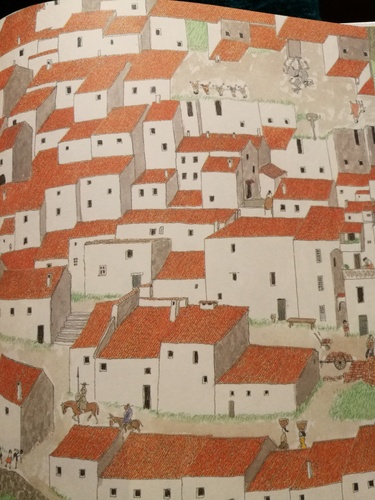We’d all like to learn a language by osmosis, with a gramar book under the pillow at night. I haven’t found a technique that works yet, but this is as close as I got.
I often feel I should be learning something Spanish-related but just can’t face irregular verbs. So when I collapse on the sofa in the evening after the kids’ bedtime “routine” of bribery and threats, I pick up this lovely wordless picture book by Mitsumasa Anno and ponder over his beautiful illustrations of Spain and all things Spanish:
I love the way Anno ties in major cultural and historic events along with plain old life. And it’s a good start for understanding the cultural reference points that form the fabric of the Spanish common heritage. Context is everything, after all – remember the man named Maria? If you come to understand a people then you will understand what they are going on about and learn how to be understood by them. That’s my theory.
In English it’s just titled Anno’s Spain and there’s a whole series. Highlights include the running of the bulls, Picasso’s Guernica, the olive harvest, Don Quijote tilting at windmills and cork extraction.
Will it help me with the imperfect subjunctive? I doubt it. Will it make me feel less guilty for not digging my grammar book out from under my pillow? Definitely.
This wordless cuento has many stories hidden in the illustrations, including actual history, so it’s a lovely gentle way to introduce these concepts to kids. Remember that in Spain you buy books from your local librería but borrow them from la biblioteca. If you always have your nose in a book then you’re a ratón de biblioteca. Drawings are dibujos or ilustraciones, but if it’s a painting (una pintura) like those by famous artists shown in this book, then you can choose between un retrato, a portrait or un cuadro (even if it’s not cuadrado, square). Look out French-speakers, el cuadro is the picture, whereas the picture frame is un marco.


